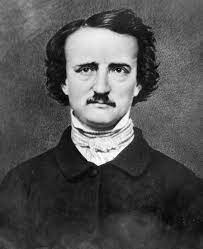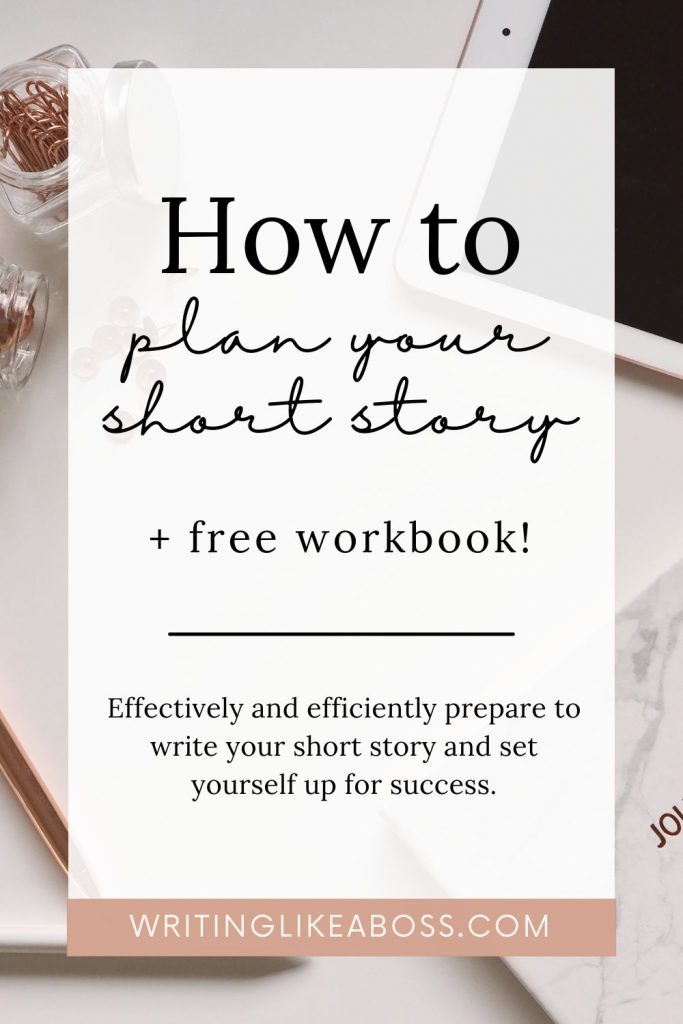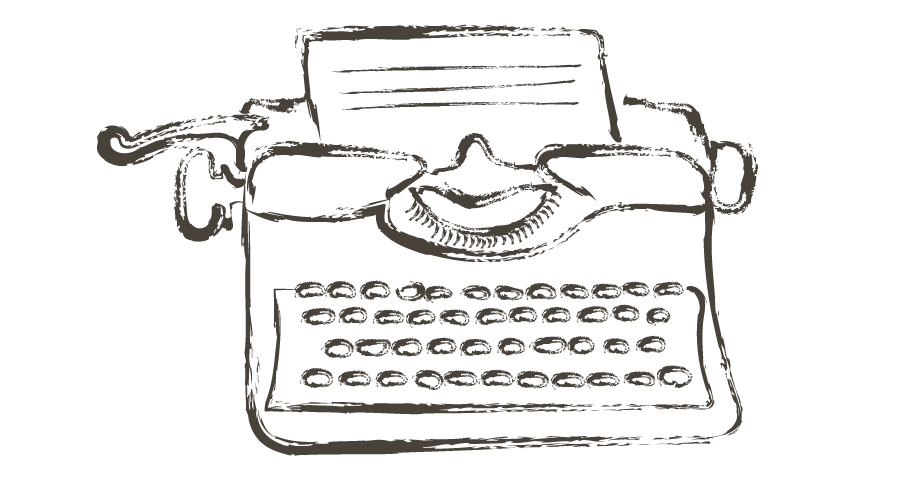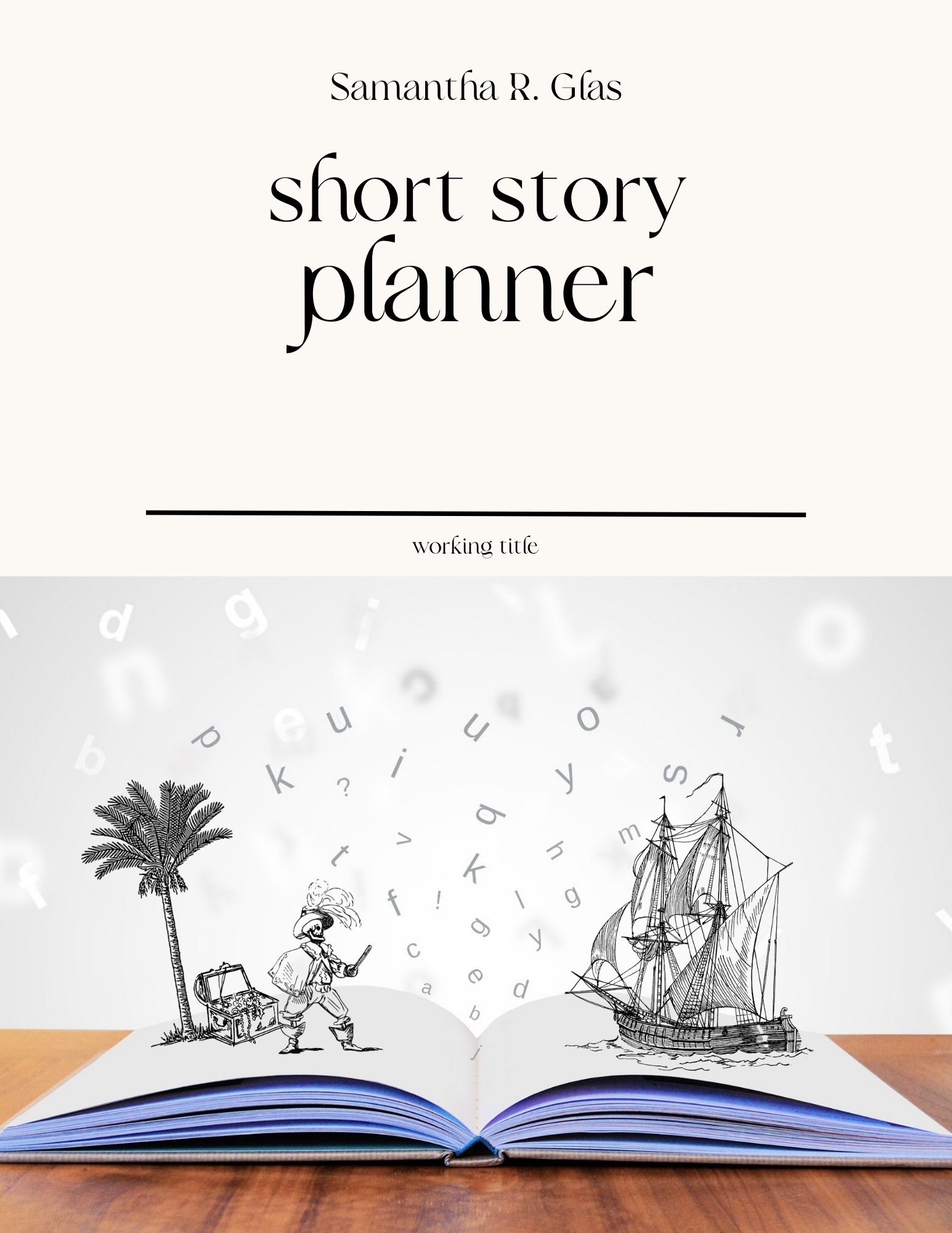
“A short story must have a single mood and every sentence must build towards it.”
— Edgar Allan Poe
Ah, the short story. You might think a short story is an easier version of a novel. It’s tempting to think that, but let me break that down for you.
Short stories are, indeed, easier than novels in the sense of length. You don’t have to write near as much content for a short story as you do for a novel.
The problem with the shorter format is that, with so little content to work with, every single word counts toward the overall theme.
Sound daunting? It doesn’t have to be.
I’ve written several short stories, some of which I’ve published here on my website and promoted through Instagram. With that marketing alone, my short stories reached a greater success than I had anticipated.
Today, I’m going to show you how I planned those short stories before I began writing them, so you can do the same!
Don’t forget your free workbook to follow along in the process! Download the free 22-page PDF below:

HOW TO PLAN YOUR SHORT STORY
1. BRAIN DUMP IDEAS
Close the door. Light a candle. Open the curtains. Put on your noise-blocking headphones. Set a timer and write every single idea that pops into your brain.
“There are no bad ideas” is a huge cliché, and it isn’t necessarily true. When you conduct your brain dump, you will have some stinkers on the page. But that’s not the point.
What would you write if you knew no one else was going to read it?
You may write down 20 ideas and end up with two that are salvageable. You rescue those two from the rubble and start again: 20 more ideas, two more gems.
This is the process. It’s messy, but it’s effective.
2. GENERATE INSPIRATION
They say that you don’t need inspiration to accomplish your goals, but discipline. I think you need both.
For our purposes, we’re going to suppose that your short story is fueled by inspiration. Because, in these early stages, inspiration is going to carry you from planning to writing.
I’m always a proponent for Pinterest boards.
My best stories started off with an aesthetic that I fleshed out with character, story, and theme. Pinterest is an excellent start for that.
3. CREATE A PROTAGONIST
Who can tell your story best?
The protagonist is the focal point of your story. There are a few ways to easily begin creating the star of the show:
Use a character questionnaire. This is perhaps the easiest way to create a character in depth. Check out my character questionnaire:
Use a character generator. These are less effective, but helpful if you need to create a character quickly. The downside is that you don’t get to create a one-of-a-kind, made-from-scratch protagonist; which is kind of the fun of character creation.
AI provides a new way to create characters without going to traditional “character generator” websites. While writing this post, I gave a character prompt to ChatGPT and it formulated an entire character for me, complete with backstory and motivation. So if you need a fully-formed character generated fast, AI is a good option for you.
Utilize personality tests (enneagram, Myers-Briggs, etc.). I’ve found that personality tests are great jumping-off points for creating a protagonist.
When I was planning my short story “Gingerbread,” my protagonist, Charlotte, began with one key trait: she is an enneagram 2. That gave me an easy list of basic traits that I could use to construct the rest of her character.
Pinterest brainstorming. You can’t go wrong with the tried and true tradition of Pinterest character boards. Search for specific character traits to find photos to represent your character, or find a ~vibe~ that suits your character’s personality.
Once you’ve curated your protagonist, your story is already well on its way to completion. Hurrah!
4. GIVE YOUR PROTAGONIST SOME FRIENDS (OR ENEMIES…)
Now that you have a protagonist, it’s time you gave them some people to share the page with.
As you add characters to your cast, ask yourself these questions:
- What does this character bring to the story?
- What is this character’s relationship with the protagonist?
- If I removed this character from the cast, would the plot still hold up?
5. BRAINSTORM PLOT

“Character is plot, plot is character.”
— F. Scott Fitzgerald
Plot is simpler than most writers make it out to be.
“Plot” can be summarized like this:
- What does my character want?
- What is keeping them from getting it?
- What do they do about it?
This is conflict. Once you have your conflict, the rest of the plot falls into place. From there, use your Short Story Planner to diagram your plot and write out your story beats.
6. BEGIN OUTLINING SCENES
Every writer outlines their stories differently. Whether you’re a plotter, a panster, or the elusive ~plantser~ here’s some ideas for outlining scenes from most to least detailed:
Excel spreadsheet layout. If you’re a traditional plotter and like knowing every detail of your story before you even create the Word doc, Excel spreadsheets might be for you.
Or if you’re a pen-and-paper sort of writer, it’s especially fun to hand-draw spreadsheets on notebook paper. I’ve found that I enjoy having notebooks designated to each of my short stories to write down snippets, ideas, characters, and sketches.
Loose scene layout. This is how I plan my stories: for each scene, I only write 1-2 sentences of description. This gives me a direction to travel with my pen, but it also gives me the liberty to improvise if I want.
Story beats layout. Rather than outlining each individual scene, consider writing based on a list of story beats. This way you aren’t constrained to linear scenes, but you have some direction.
No outline. You don’t necessarily need an outline for your story. Many writers work better when they write from the seat of their pants. If you appreciate the freedom to figure things out as you go along, this is a good option for you.
To summarize, here’s how you plan your short story:
- Brain dump all ideas.
- Generate inspiration.
- Create a protagonist.
- Create other characters.
- Create a conflict/plot.
- Outline your scenes (or don’t!).
Don’t forget, you can accomplish all of this and more with my Short Story Planner. Download the free PDF below!



Comments
One response to “How To Plan Your Short Story (+ Free Planning Workbook!)”
Short stories are difficult. Like you said, shorter is not necessarily easier. Faulkner said, “Maybe every novelist wants to write poetry first, finds he can’t, and then tries the short story, which is the most demanding form after poetry. And, failing at that, only then does he take up novel writing.” Amen, brother Bill. Amen.